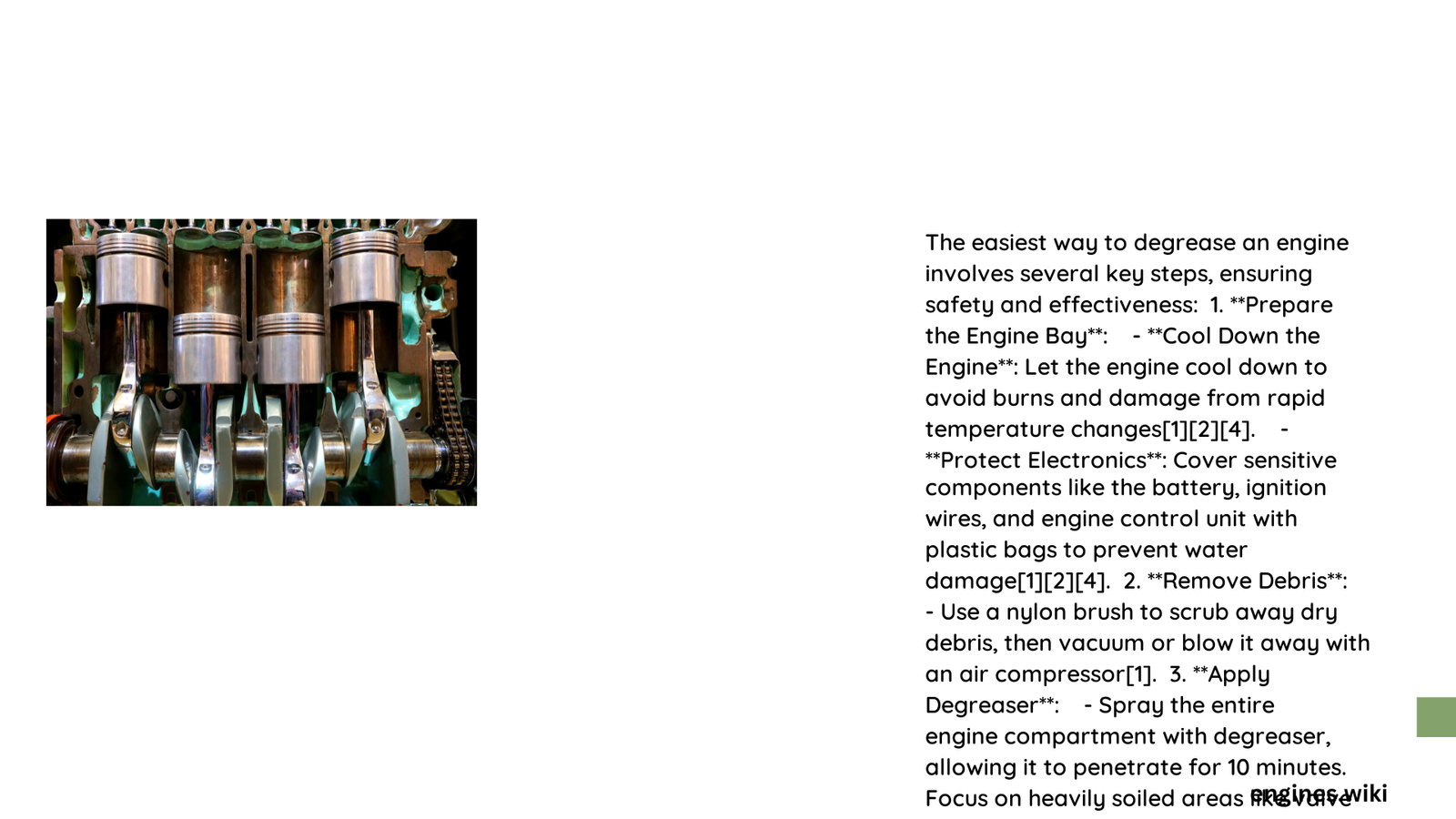Degreasing an engine can seem daunting, but with the right approach, it becomes a simple task. The easiest way to degrease an engine involves selecting a high-quality degreaser, preparing your workspace, applying the product systematically, and using proper tools. This comprehensive guide will walk you through each step, ensuring your engine looks clean and performs optimally.
What Are the Essential Preparations Before Degreasing?
Tools and Materials Checklist
- Protective Gear
- Safety glasses
- Rubber gloves
-
Old clothing or mechanic’s coveralls
-
Cleaning Supplies
- Engine degreaser
- Nylon brush
- Microfiber towels
- Plastic sheeting
- Garden hose
Why Preparation Matters?
Proper preparation prevents potential damage and ensures an efficient cleaning process. Covering electrical components and ensuring the engine is cool are critical first steps.
How to Select the Right Degreaser?

| Degreaser | Effectiveness | Price Range | Best For |
|---|---|---|---|
| Sonax Engine Cleaner | High | $10-$15 | All engine types |
| Gunk Original Degreaser | Medium-High | $5-$10 | Tough grease |
| Chemical Guys Orange Degreaser | High | $10-$20 | Environmentally friendly |
Key Selection Criteria
- Biodegradability
- Surface compatibility
- Concentration level
- Environmental impact
What Is the Step-by-Step Degreasing Process?
Detailed Cleaning Workflow
- Cool Down Engine
- Ensure engine temperature is ambient
-
Disconnect battery for safety
-
Cover Sensitive Components
- Use plastic sheeting
- Protect electrical connections
-
Block air intake areas
-
Apply Degreaser
- Spray evenly across engine surface
- Allow 3-5 minutes penetration time
-
Use brush for stubborn areas
-
Scrub and Rinse
- Use nylon brush with moderate pressure
- Rinse thoroughly with low-pressure water
- Avoid direct high-pressure spray on electronics
What Are Common Mistakes to Avoid?
Potential Pitfalls
- Using degreasers on hot engines
- Neglecting to cover electrical components
- Applying excessive water pressure
- Skipping protective gear
- Not reading product instructions
Pro Tips for Optimal Results
Expert Recommendations
- Work in a well-ventilated area
- Use biodegradable degreasers
- Clean engine when cool
- Wear protective equipment
- Test degreaser on small area first
Maintenance Frequency
Recommended Cleaning Schedule
- Daily Driver: Every 6-12 months
- Performance Vehicles: Every 3-6 months
- Classic/Vintage Cars: Twice annually
Safety and Environmental Considerations
Responsible Cleaning Practices
- Dispose of chemicals properly
- Choose eco-friendly products
- Minimize water usage
- Protect surrounding environment
Cost-Effective Strategies
Budget-Friendly Approach
- Buy concentrated degreasers
- Reuse cleaning tools
- Perform regular maintenance
- Learn DIY techniques
Troubleshooting Common Issues
Quick Solutions
- For stubborn grease: Let degreaser sit longer
- For delicate surfaces: Use gentler brush
- For electrical concerns: Consult professional
Final Thoughts
Degreasing an engine doesn’t require advanced skills. With proper tools, technique, and patience, anyone can achieve professional-level results. Regular maintenance prevents long-term damage and keeps your engine performing optimally.
Pro Tip: Always prioritize safety and follow manufacturer guidelines when cleaning your engine.
Reference:
- https://www.calcalistech.com/ctechnews/article/h1vvkpq26
- https://www.youtube.com/watch?v=wdnYms1qauw
- https://autogeekonline.net/threads/review-dp-engine-degreaser.21296/
